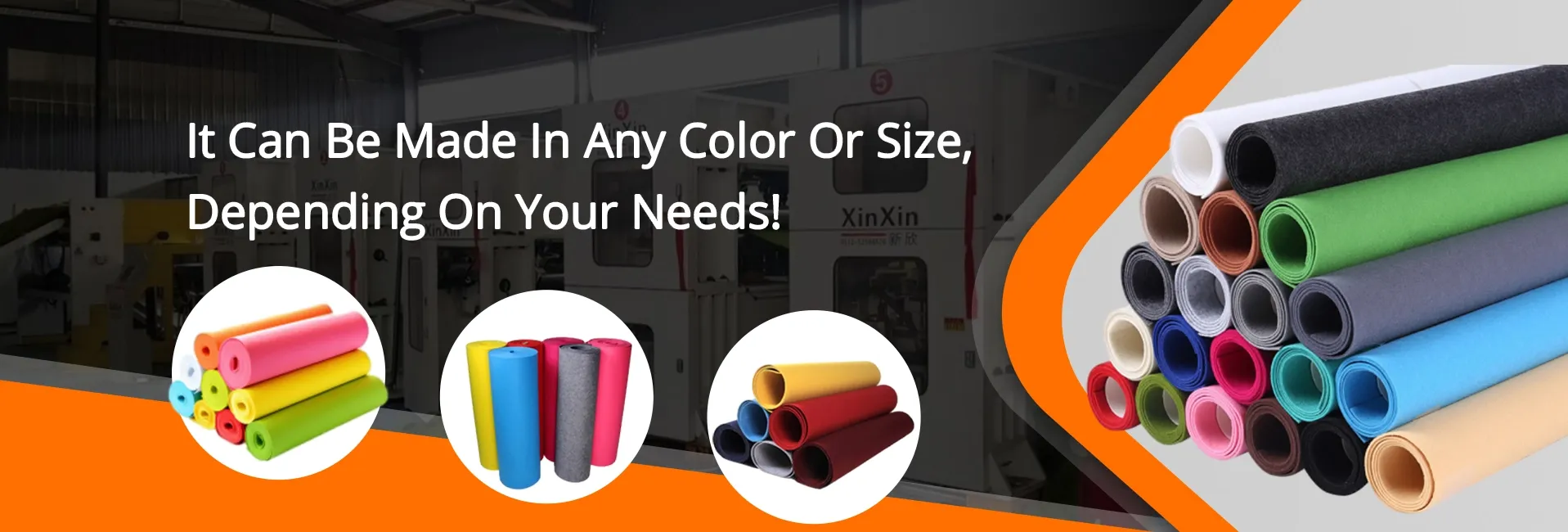felt products
Exploring the World of Felt Products
Felt products have been a part of human culture for thousands of years, appealing to both artisans and consumers alike. This textile, made from matted fibers, is revered for its unique qualities like warmth, durability, and versatility. The process of creating felt is ancient, deeply rooted in various cultures around the globe. In this article, we will explore the history, production methods, applications, and sustainability of felt products.
A Brief History of Felt
The origins of felt date back to nomadic civilizations, particularly among the peoples of Central Asia. It is believed that felt-making began as early as 6000 B.C. when early humans discovered that animal fibers, when compressed and moistened, could form a dense material. This process gave rise to warmth-providing garments and durable shelters, making felt indispensable in harsh environments.
Felt has played a significant role in the cultural heritage of many societies. In Mongolia, for example, felt is used to make traditional yurts, known as gers, which are both insulated and portable. In Western cultures, the use of felt can be seen in various applications, from artisan crafts to industrial uses.
Production Methods
The process of felt making typically involves three main stages fiber preparation, matting, and finishing. Wool is the most common fiber used, owing to its unique scales that enable the fibers to interlock when agitated.
1. Fiber Preparation Initially, raw wool is washed, dyed, and carded. Carding separates and aligns the fibers, making them easier to mat.
2. Matting The prepared wool is layered and subjected to moisture, heat, and agitation. This can be done either by hand or through machine processes. The vigorous agitation causes the fibers to tangle and bond, creating a dense mat. This stage can take several hours to days, depending on the desired thickness and consistency of the felt.
3. Finishing Once the matting process is complete, the felt is washed, dried, and sometimes pressed. It may also undergo additional treatments, such as pressing or needle-punching, to achieve specific textures or thicknesses.
felt products

Applications of Felt Products
Felt is incredibly versatile and finds use in various industries, including fashion, home décor, craft making, and industrial applications. In the fashion world, felt is commonly used for hats, bags, and shoes, combining style with functionality. Its insulating properties make it a favorite for winter clothing and accessories.
In home décor, felt products are widely utilized. Felted rugs, wall hangings, and decorative items not only add warmth and texture to any living space but also serve as beautiful works of art. The craft sector has embraced felt for various projects, from children's toys to intricate artworks, often showcasing vibrant colors and patterns.
Industrially, felt is used for sound insulation, automotive applications, and as padding in various devices. Its durability and ability to withstand wear and tear make it an ideal choice for such practical uses.
Sustainability and the Future of Felt Products
Sustainability has become a significant concern in contemporary textile manufacturing, and felt products are no exception. Wool, being a natural fiber, is biodegradable and can be sourced from farms that prioritize animal welfare and responsible farming practices. Moreover, felt products can be produced with little waste, as offcuts can often be reused or recycled.
Innovative designers are also exploring new materials for felt production, including recycled plastics and blends of natural fibers, making felt even more sustainable. This shift not only addresses environmental concerns but also opens up new avenues for creativity and design.
Conclusion
Felt products, with their rich history and wide-ranging applications, play an essential role in both traditional and modern contexts. From providing warmth and protection in ancient times to serving as stylish functional items today, felt continues to evolve. As we move towards a more sustainable future, the adaptability and resourcefulness of felt will ensure that it remains a beloved material for generations to come. Whether you're seeking artisanal crafts or practical solutions, the world of felt products offers something for everyone, combining heritage with innovation in a uniquely compelling way.
-
What Makes Felt a Great Choice?NewsNov.19,2024
-
Total Mixed Ration (TMR) Feed for CattleNewsNov.19,2024
-
The Ultimate Guide for Felt Polishing WheelsNewsNov.19,2024
-
Industrial Felt for Various ApplicationsNewsNov.19,2024
-
Felt Makeup Bags and Inserts BagsNewsNov.19,2024
-
Choosing the Right Hotel TowelsNewsNov.19,2024
-
Your Go-To Guide For Affordable Wholesale Wool FeltsNewsOct.31,2024







